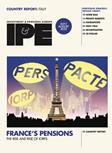Why sector shifts start to dominate
The past two years of dull market performance have made investors increasingly focus on a number of key issues that most impact portfolio diversification. Although one clear trend has been to minimise benchmark risk, the other area that has grown significantly has been the use of sector allocation as a ...
You have now reached your article limit
Already a registered user or member? Sign in here
To continue reading, register free today for access
Registration also includes access to

Five reasons to register today
- Access to IPE articles from our award-winning editorial team
- Unique IPE market data, rankings and tables
- In-depth interviews with pension fund leaders
- Extensive coverage of latest asset class trends
- Comprehensive archive of data, research and intelligence







